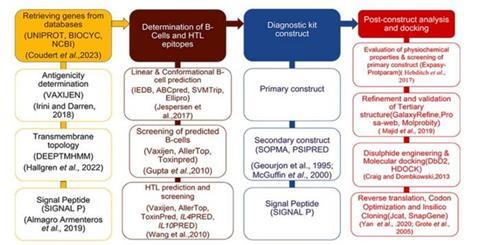Cronobacter sakazakii is a harmful germ that can be found in powdered baby formula. It can cause very serious health problems in infants, such as meningitis and septicemia. Right now, it takes a long time and is complicated to check if the germ is in the formula.

However, a new study has created a special test that uses a computer program to find the germ in the formula. This new method makes it easier and faster to find the germ, which is known for causing serious illness in babies. It helps make sure that baby formula is safe to use.
Cronobacter sakazakii, a pathogen in powdered infant formula, poses significant risks to neonates, causing outbreaks in NICUs with high mortality rates. This Gram-negative bacterium, resistant to desiccation, can survive in dry environments like powdered formula. Despite its prevalence, current detection methods are slow, requiring skilled personnel and expensive equipment, underscoring the need for a more efficient, cost-effective solution.
Bioinformatics-based detection kit
In a new study published in the journal Food Quality and Safety on 22 January 2024, researchers from University of Birmingham unveiled a novel bioinformatics-based detection kit for identifying Cronobacter sakazakii in powdered infant formula. This breakthrough offers a more effective approach to detecting this harmful pathogen, commonly linked to severe infant illnesses.
In this cutting-edge study, researchers have harnessed the power of bioinformatics to create a detection kit specifically designed to identify Cronobacter sakazakii in powdered infant formula. This pathogen, known for its severe health risks to infants, has been challenging to detect with traditional methods.

The research team embarked on a meticulous process, selecting genes associated with the bacterium’s virulence. They then employed sophisticated immunoinformatics techniques to analyze these genes for antigenicity and epitope characteristics, leading to the creation of a multi-epitope detection kit. This bioinformatics approach allowed for the precise identification of pathogen-specific markers, making the detection kit not only innovative but also highly efficient and potentially transformative in the field of food safety.
Infant food safety
Lead researchers Elijah K. Oladipo and Helen Onyeaka emphasize: “This study represents a major step forward in infant food safety, potentially revolutionizing how we detect and respond to foodborne pathogens like Cronobacter sakazakii.”
This detection kit promises rapid and precise identification of Cronobacter sakazakii, crucial for preventing outbreaks and ensuring infant formula safety. Its application could significantly reduce the time and resources needed for pathogen detection in food safety labs. The research underscores the importance of integrating computational methods in the fight against foodborne illnesses, offering a faster, more accurate way to safeguard infant health.







No comments yet